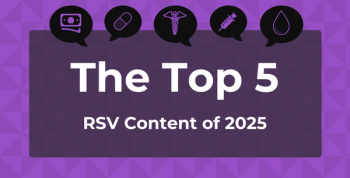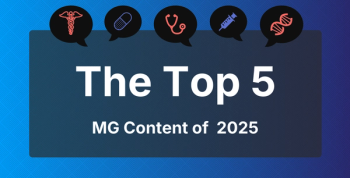
Medicare Programs Observe an Increase in Participating Physicians Despite Burnout
Key Takeaways
- Physician participation in Medicare increased by 6.3% from 2013 to 2023, despite high burnout rates during the pandemic.
- Burnout rates have declined to pre-pandemic levels, with 43.2% of physicians reporting burnout in 2024.
Physician burnout rates have decreased since the pandemic, but the likelihood of Medicare exits threatens access to underserved populations.
Practicing physicians participating in the Medicare program increased by 6.3% from 2013 to 2023 despite self-reported rates of burnout due to the pandemic, according to a
In a survey from the American Medical Association (AMA) consisting of nearly 2400 US physicians, 62.8% reported at least 1 manifestation of burnout in 2021.2 Using Medicare fee-for-service (FFS) claims data, researchers observed age-adjusted evidence of physician exits from Medicare during the pandemic. Despite high stress and burnout rates during the pandemic—which have since declined post-pandemic—the research letter shows a significant increase in physician participation in the Medicare program.1
Currently, physician burnout rates have dropped below 45%, nearly the lowest they’ve been since the COVID-19 pandemic and comparable to that of pre-pandemic rates. As of 2024, only 43.2% of physicians reported experiencing at least 1 manifestation of burnout. However, there was only a slight decrease from 48.2% in 2023 but a more significant difference from 53% in 2022 and 62.8% in 2021.2,3
The AMA is dedicated to reducing physician burnout, a significant part of which is influenced by inflation and recent cuts to Medicare. In the last 20 years, payment rates have declined 33%, putting a financial strain on physicians practicing and limiting patient access, especially for underserved populations.4
This year, the AMA introduced the Medicare Patient Access and Practice Stabilization Act of 2025 to Congress. The bill aims to reverse the most recent round of Medicare payment cuts to financially relieve physicians and their practices and preserve patient access.4
“If Medicare keeps decreasing what it pays providers, you're going to start to see more providers opt out,” said Susan Escudier, MD, a medical oncologist, in an interview with The American Journal of Managed Care®. “And in my community, there are a lot of primary care doctors now who don't take Medicaid or Medicare.”
Physician Participation in the Medicare Program
The Medicare FFS claims data used in the research letter characterized physician participation trends in the Medicare program from 2013 to 2023. Researchers aimed to assess whether physician- and county-level factors were associated with program exit.1
A physician Medicare program exit was defined as a 6-month period without any claims billed for a Medicare beneficiary following a 6-month period with 5 or more claims. Between 2023 and 2023, there were 11.6 billion claims from physician services from over 960,000 physicians. Participating physicians in the Medicare program increased by 6.3% from 585,642 to 622,342 and varied by physician age, sex, specialty, metropolitan location, and Health Professional Shortage Area (HPSA) status.
The physicians most likely to exit the program were often female, of older age, or in primary care. Physicians who worked in a nonmetropolitan county (2.71%; 95% CI, 2.63%-2.78%) were more likely to exit when compared with physicians in a metropolitan county (2.58%; 95% CI, 2.58%-2.59%). Similarly, physicians who worked in full- or partial-shortage HPSAs were more likely to exit the program than physicians who did not.
Impact of Physician Exits
Although researchers observed an increase in physician participation in the Medicare program, they noted that the increased likelihood of exits would likely impact access to care for already underserved populations.1
“I do worry about that, because again, it’s the fact that most people don't realize until they get sick or a family member does that you don't get Medicaid unless you're sort of destitute,” Escudier said.
The study was limited by Medicare FFS data and did not account for physician participation in Medicare Advantage, Medicaid, or commercial insurance. Researchers were also unable to determine whether physicians exiting the program were practicing at Federally Qualified Health Centers or rural clinics. Lastly, Medicare exits may have been overcounted in the later years of the study among physicians who may have reentered after the study period.
Underserved patient populations are at risk with Medicare and Medicaid budget cuts in addition to the increased likelihood of physician Medicare exits.
“If they want to say, ‘OK, I'm just going to pay for the health care costs out of pocket,’ or ‘I want to pay for my own coverage out of pocket,’ it's out of the reach of most people that aren't wealthy,” Escudier said.
References
1. Cantor J, Kerber R, Damberg CL, Whaley CM. US Physician Medicare Program Participation and Exit, 2013-2023. JAMA. Published online October 20, 2025. doi:10.1001/jama.2025.15343
2. Berg S. Pandemic pushes U.S. doctor burnout to all-time high of 63%. American Medical Association. September 15, 2022. Accessed October 21, 2025.
3. Berg, S. U.S. physician burnout hits lowest rate since COVID-19. American Medical Association. May 1, 2025. Accessed October 21, 2025.
4. American Medical Association. AMA Advocacy Impact Report. American Medical Association; June 2025. Accessed October 21, 2025.
Newsletter
Stay ahead of policy, cost, and value—subscribe to AJMC for expert insights at the intersection of clinical care and health economics.







































